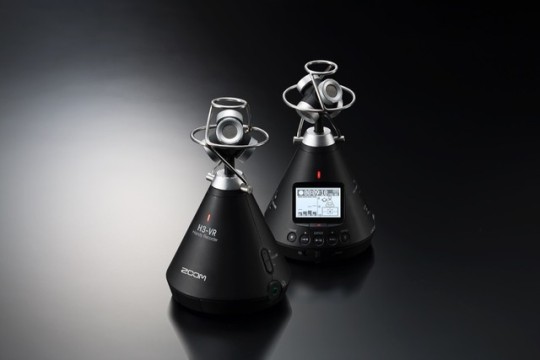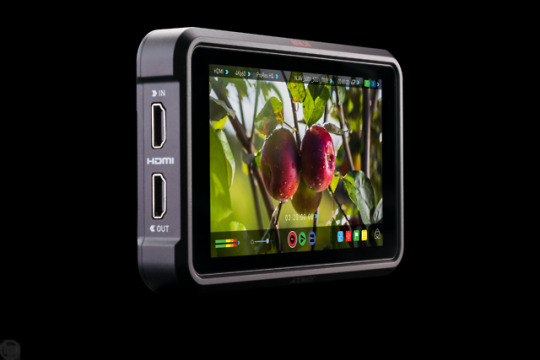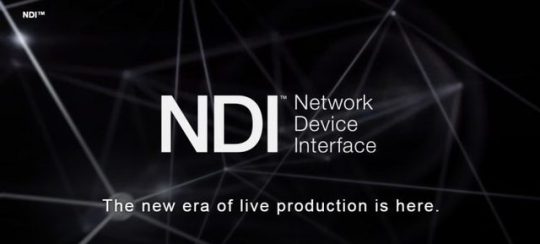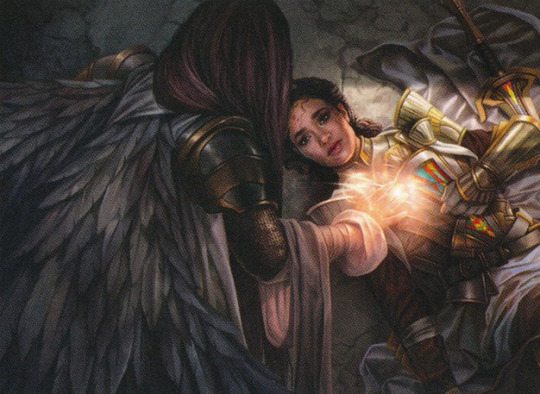#pcm deity
Text
Mulan: A Guide to Worship
Mulan is the protagonist of Disney’s Mulan (1998). She is the first Disney princess to be considered a princess through acts of heroism and honor. She stands for bravery, advocacy, and protecting those you love.
There are many ways to worship her:
Worshiping/honoring your ancestors
Defying gender roles
Learning about her myth/poem, Northern Wei Dynasty history, Chinese war history, etc.
Learning in general
Defying gender roles and authority/obedience
Proving people wrong (especially when they underestimate you)
Observing nature
Showing kindness and courage
Advocating for yourself and ‘lesser people,’ especially women, the elderly, and the disabled
Exercising, training, or doing sports or martial arts
Cutting your hair of styling it to look shorter than it is
Setting boundaries and keeping them
There are many things to offer her and put on an altar to her:
Swords
Dragons
Family guardians/temples
Tea
Horses and horse-riding
Crickets
Good luck charms
The color red
Old bird cages (like the one Cri-Kee is in)
Armor
Other traditional Chinese clothing/dress
Wooden poles (especially with an arrow on the top, as shown in the movie)
The Ballad of Mulan
#mulan#pc paganism#pc magic#pcp#pcm#pcp witch#pcm witch#pcp deity#pcm deity#pop culture pagan#pop culture magic#pop culture paganism#mulan princess
52 notes
·
View notes
Text
How to Start Pop Culture Deity Research
So you’ve figured out that you want to work with a pop culture deity in your foray into pop culture magic and/or paganism (PCM or PCP). Firstly, congratulations! Choosing to work with a deity first instead of waiting for them to reach out is always nerve-wracking, and I’m proud of you for getting this far!
“Thank you, Jasper. But how do I do research into the pop culture deity?” you may ask. Pop culture deities tend to get little press, and you’re not alone in your struggle to find information on offerings, associations, or even domain. As I only work with pop culture deities at this time, that’s what I’m covering here. I’m also not going to cover picking the deity, as that’s a deeply personal process and is honestly just like picking a non-pop culture deity to work with or worship.
Luckily, there are six basic steps that you can take:
1: Scour canon and supplemental materials.
Checking the canon material is kinda self-explanatory for pop culture magic. While non-canon materials can often contradict canon, they can also provide some further insight into a character (when written well). If you’re working with a deity from supplemental material, I wish you luck, because this is going to be more irritating.
2: Fandom wikis.
If you don’t have access to the canon/supplemental material, fandom wikis are a good backup. They are sources of knowledge that are absolutely dedicated to a piece of media and can help you learn more about a specific pop culture deity without making you play through a series of 60+ hour games or spending a small fortune on books if you don’t have a library or your library doesn’t have the series.
3: See if anyone else has covered the deity in a PCP context.
For more popular series such as the Elder Scrolls or the Legend of Zelda, their deities may already be worked with by other pop culture pagans online. Trying to find PCP spaces (Tumblr tags, Discord servers, etc) can help you learn others’ perspectives on the deity you’re trying to study for.
4: Check fandom writing blogs.
Headcanon and fandom writing blogs are a pop culture pagan’s best friend. These fine folks put endless hours, often for free, into some top notch stuff. Many take requests or commissions, and you can tip them for their help. Really, go befriend a writing blog right now.
5: Unverified Personal Gnosis (UPG) and personal headcanons.
I consider these two things to be the same but some other magic practitioners say that UPG comes from experience and headcanons are just “there”, so take whatever definition you’d like. They’re essentially the same in a PCP context because non-pop culture practitioners are going to treat everything you ever say as UPG and fandom blogs (because you will inevitably get those unless you make a point of saying “this is a religious post, fandom blogs do not interact”) will think they’re just weird headcanons written from an in-universe perspective. You really can’t win here.
Anyway, through personal experience and associations, you can learn more and more what a pop culture deity is associated with. This is an important step in the process of any form of deity relationships, not just with pop culture deities.
6: Just ask the deity.
At this point, you’ve decided that you want to work with this deity. You’ve done your deep-dive into canon. You’ve reached out and learned a few initial things. Now, you’re talking to the PCP deity in some manner, so any questions you have about them...you can just ask.
This ties back into number 5, in that whatever you find out with be UPG/a headcanon because you can’t point to something in canon.
#jasper post#pop culture#beginner#deity work#guide#pop culture pagan#pop culture paganism#pop culture magic#pop culture magick#pop culture witch#pop culture witchcraft
680 notes
·
View notes
Text
PCWT: Communication, Confirmation, and Conversation

A question I hear come up a lot in PCM/PC Paganism circles is “how do I know I’m actually reaching out to (x)?” Given how well, sadly scarce info on PC Paganism or Pop Culture Magic in general is, I’d say that’s an absolutely valid question to have. So here’s just some of my tips over the years that have helped me out.
1). Source Research

As always, we fall back to the lovely home base of research. In this case, we’ll not only research the character, but the background of their source. Is the character familiar with magic and the occult to some degree? Would they at least be aware of things like tarot cards, pendulums, and the like? Is the supernatural even a “thing” in their source or are they somewhat skeptic to it?
Chances are, if the character(s) are at least somewhat familiar or aware of magic as a whole or the supernatural in general, they may be more apt to pick up on traditional divination methods like Tarot, Oracle cards, pendulums, scrying, etc.
2). Signifiers

What are some things that your character is associated with? Have you been seeing those fairly often in your day to day as of late?
This one in particular may get a little tricky, especially in the algorhythmic space of sites like Pinterest, Tiktok, and even Tumblr when it comes to “Randomly” stumbling across say, imagery of them or even curated blogs or pages for them. This may make discernment difficult to discern what is a “calling card” from them or not, but in general, look for things that you wouldn’t expect to come curated to you.
For example, say your character is associated with a certain number or even certain imagery or themes and you go out for a little bit and come across their number or imagery several times in places you wouldn’t have expected it.
3). Clair-’s

I put this method a little lower on the list because with some folks, clair-senses may not come naturally to them or maybe they have other things going on that may interfere with honing in or developing any sort of clair-senses. Hell, some practitioners may not really think clair’s are a thing at all and fair to them, to each their own and what not.
But if you do have some variation of them, try honing in on things relevant to someone your working with, whether that’s scents, sounds, sequences, anything in between, really.
I may come back to this post to refine it later, maybe do a 2.0 version, because at least in my view, there’s no “one-size-fits-all” for communication with any sort of pop culture deity/spirit/egregore/entity/etc. Each one has their own likes, dislikes, quirks, etc. and I feel like it’s honestly up to the practitioner to learn what those are and how best to work with them and what they prefer.
And please feel free to either comment or reblog with methods or tips that work for yourself that others may find handy too!
But as always,
Stay safe, have fun, stay spooky 💜🦇
#pop culture witchcraft#pop culture magic#pop culture paganism#someone I work with really likes to put shapes or hearts in the bubbles of their wickless candle#and honestly it’s cute as all get out 🥹
80 notes
·
View notes
Text
genuine question for people who practice PCM/PCP —
is it possible to worship/work with/etc pop culture deities who are adaptations of deities from other pantheons (ie hellenic, norse)?
for example, working with hades from the hades game instead of hades from the hellenic pantheon? (does that make sense?)
(i don’t plan on doing this or anything, just a thought that came into my head and am very curious about now haha)
#im really just curious HAHAHA#pop culture magic#pop culture paganism#pop culture witchcraft#c talks#c asks#?#i guess?
12 notes
·
View notes
Photo










2018 IBC Show
The IBC Show (2018) is home to Europe’s largest collection of vendors driving the future of media and entertainment. After visiting this years show I’ve made an personal list for the top twenty most innovative and important introductions and announcements.
Top 20
H3-VR Handy Recorder by Zoom
X-T3 Mirrorless Camera by FUJIFILM
Deity Connect Wireless Audio System by Deity
Cinema Grade (for NLE’s) by Color Grading Central
Teradek RT ACI [Assistant Camera Interface] by Teradek
Insta360 Pro 2 by Insta360
Ninja V by Atomos
Pro Convert HDMI 4K Plus [NDI] by Magewell
Dante Domain Manager by Audinate
Stellar (iOS/Android App) by ARRI
ELEMENTS All-NVMe Media Storage by ELEMENTS
Cinegy Multiviewer [NDI supported] by Cinegy
XF705 4K UHD Professional Camcorder by Canon
Turing Codec [HEVC] by BBC R&D
AtomX (Ethernet/NDI module) by Atomos
Network Attached Processor [NAP] by AXON
StudioLink 4K by Amimon
Agito MagTrax by Motion Impossible
AW-UE150 4K 50p Professional PTZ Camera by Panasonic
Spherical Drone Display by NTT Group
What also caught my eye (alphabetical order)
AJA HDR Image Analyzer
BirdDog Eyes P200 PTZ NDI Camera
BirdDog PTZ NDI Keyboard
Blackmagic Design RAW [beta]
Canon XF-HEVC Format [H.265 in MXF]
Core SWX FLEET FF [Quad Charger for MoVI Pro Battery’s]
Detu MAX Camera [3D 8K 360 VR Camera with Ai]
Ereca Stage Racer 2 [8x12G]
FieldCast Monitor Monk One
FieldCast Power Station One
Ikegami HQLM-3125X HDR 4K DCI Master Monitor
Innovativ Insight Monitor Mount
Magewell Bridge software for NDI
Medialooks NDI Software Converters [Free, Windows only]
MobileViewpoint VPilot
Motion Impossible Agito Core [Tower, Trax, Sports]
Newtek NDI 3.7
NTT Group Real-time 8K/120p HEVC Encoding and Decoding
Radeon Pro WX 8200 Graphics Card
Riedel Bolero Wireless Intercom Standalone Series
Røde NT-SF1 Ambisonic Microphone (SoundField)
Røde SC6-L
Røde SoundField Plugin [macOS/Windows]
Ross Video Carbonite Ultra Switcher
Ross Video Expression Go [NDI-capable]
Saramonic SR-VRM1 Digital Plug-on Linear PCM Recorder for XLR
Seagate 14TB Disks [BarraCuda Pro, IronWolf, IronWolf Pro]
SmallHD FOCUS OLED [SDI & Touch]
Sony BVM-HX310 Trimaster HX Reference Monitor
Sony RX100 VI Compact Camera
Swit LA-WR8 Wireless DMX Controller
Telestream Project Orchid
Teradek Bolt DSMC2 (for RED)
Tilta Nucleus Nano
Tokina 11-20mm T.29 Cinema ATX Zoom Lens
TVlogic F-7H 7″ FHD HDR Field Monitor Monitor [3600 Nits]
Vaxis Storm 055 5.5” Wireless Monitor/Receiver
Wooden Camera Metal Battery Plates
Wooden Camera v2 Top Handles
YellowTec AoIP update for Intellimix Desktop Mixer
#IBC Show 2018#International Broadcasting Convention#IBC Show#IBC#Amsterdam#Netherlands#NL#AMS#Technology#Innovation#Exhibition#AV#Broadcasting#Production#Post Production#Displays#Immersive#Monitors#VR#Virtual Reality#AR#Augmented Reality#MR#Mixed Reality#Audio#Video#Robotics#Projection#Software#Workstation
1 note
·
View note
Text
Cinderella: A Guide to Worship
Cinderella is the protagonist of Disney’s Cinderella (1950). She is one of the original Disney Princesses. She is an example that nothing can guarantee success and happiness, but also that your life situation can change any time. It also shows that kindness will be rewarded, while selfishness and hatred will not. She is the embodiment of hope and beauty.
There are many ways to worship her:
Learning how to ballroom dance
Learning how to walk in heels
Embracing your feminine side
Being kind to others
Helping the less fortunate
Learning how to sew
Doing household chores
Staying humble
Taking care of your pets
Feeding wild animals
Helping/volunteering at an animal shelter
Making a birdhouse
Keeping bird feeders and birdbaths in your lawn
Getting pet mice
Attending a ball/formal party
Wearing/getting a ball gown
Keeping a good relationship with your family (especially step-family!)
Growing pumpkins
Getting a grandfather or cuckoo clock
Dressing up for an event
Dressing up for no reason
Learn about her original myths
There are many things to offer her and put on an altar to her:
Castle figurines or photos
Fake or real pumpkins/pumpkin foods (pumpkin spice lattes!!)
Cleaning supplies (sprays, pastes, liquids, etc.)
Cleaning tools (brooms, mops, sponges, etc.)
Figurines or photos of things related to her story (mice, birds, pumpkins, carriages, glass slippers, ball gowns, etc.)
Sewing machines or kits
Needles and thread
Fabric
Crowns
Aprons
Bandanas, headbands, or other things used to keep hair out of your face
The color blue
Tea
#cinderella#pc paganism#pc magic#pcp#pcm#pcp witch#pcm witch#pcp deity#pcm deity#pop culture magic#pop culture pagan#pop culture paganism#cinderella princess
17 notes
·
View notes
Text
Is there any specific pop culture character you’d like to see a ‘guide’ type post about? All I can think of is Disney and the like, so I thought I’d ask the community. Any specific pop culture sources?
#pcp#pcm#pcp pcm#pcp deity#pcp witch#pc paganism#pc magic#pop culture magic#pop culture pagan#pop culture paganism#pcm deity#pcm deities#pcp deities#pcp worship#pcm worship#pagan
2 notes
·
View notes
Note
Not exactly a question but sort of but--
If I really liked the new animated She-Ra show, and played around making sigils with the star script they used in the show, would that be a sort of pop culture paganism?
Just excited lol bc I connect with a lot of your posts about it but hadn't found media that seemed to click for me yet
Hey friend!
That's more pop culture magic/witchcraft in my opinion. Pop culture paganism is more deity work or worship, while pop culture magic/witchcraft is the broader category that fits a lot more into it, like sigils or correspondences or elements or workings. I've personally started using the term "pop culture magic" (PCM) more than "pop culture witchcraft" (PCW) because I'm not a witch, I'm a wizard, but this is an overall moot distinction because they're the same thing with a different word at the end.
But I'm really, really glad that you found a piece of media that resonates with ya! I checked my own She-Ra tag on this blog and found that I reblogged a tarot spread based on it that you might also wanna take a look at.
I hope you have fun with this! Let me know how your sigil creation goes!
~Jasper
5 notes
·
View notes
Text
Jasper's Pop Culture Magic/Paganism Guide For Beginners & Toe-Dippers
When you first get started in pop culture magic (PCM) or paganism (PCP), it can seem overwhelming because of the lack of broad-scope sources and the abundance of options for what to use in your craft. If you're building a PCM-based praxis, you may be wondering what you should do.
First, narrow it down.
Choose the things you deeply love and carry with you, stuff you've loved for a while or can see yourself loving for a long time. Stuff that makes sense as a medium for magic for you.
When I started, I only used Pokemon-based stuff, because I've been unfortunately obsessed with that series since I was little. I eventually branched out into Dungeons and Dragons, the Elder Scrolls, and Magic: the Gathering. There have been plenty of series that I enjoy that I think could be an interesting addition to my magical practice, but I haven't included them.
Second, find what fits.
I don't interact with my four media sources the same way, and this seems to be a pretty common occurrence in PCM/PCP. There are several ways to interact with pop culture in your magical and/or religious practice(s), some of which I asked about in my recent pop culture survey. If you're looking to incorporate PCM into your craft or PCP into your religious practice, consider the following methods (though there are more than just those listed here).
Divination (either outright or inspiration).
Things like cards or runes can be used in divination, especially if they're already used for that in the source.
Other things can be used as inspiration for divination methods, such as tarot decks based on the media in question or using the soundtrack (if applicable) for shufflemancy.
Elemental (or similar) systems.
Some pieces of media have elemental systems, many of which follow elemental systems used in our world. For example:
Avatar: The Last Airbender (and its related spinoffs): air, earth, fire, water (and possibly spirit? I don't keep up with it)
Cardcaptor Sakura: dark, earth, fire, ice, light, snow, thunder, water, wind, wood
Flight Rising: arcane, earth, fire, ice, light, lightning, nature, plague, shadow, water, wind
Iron Widow: earth, fire, metal, water, wood
Other franchises don't have elements, but rather systems that categorize magic in other ways.
Dungeons and Dragons: Magic Schools (abjuration, conjuration, divination, enchantment, evocation, illusion, necromancy, transmutation)
Magic: The Gathering: Colors (White, Blue, Black, Red, Green, and sometimes Colorless)
Pokemon: Types (there are 18 of those damn things, I'm not listing them all here)
The Elder Scrolls: Magic Skills (Alteration, Conjuration, Destruction, Enchanting, Illusion, and Restoration, though Alchemy is a Stealth Skill that's often added)
Figures such as protagonists, in-universe divine figures, or different races (in the case of sci-fi/fantasy).
This can be close to deity work, hero worship, working with archetypes, or spirit work. It can vary and fluctuate. This leans more into the pop culture paganism side, but it's something that's always an option.
Working with different races, such as the Merfolk of MTG, is another option if you don't like working with individuals and rather choose to interact broadly. I don't know much about it, but uhhhh I may be mildly obsessed with the idea and am researching it.
Inspiration for servitors/thoughtforms.
If you have the energy and magical programming know-how, this could be an interesting avenue to explore. It helps with visualization and ideas of what the servitor/thoughtform looks and acts like.
Magical praxes (ideas of how magic works).
This is a lot more vague, but essentially you're taking ideas from the magic system of the media and working with it in our world to help explain how magic works to you.
Spells such as wards or fireballs.
You actually don't have to be a PCM practitioner to make spells based off of pop culture things (not just spells, but things like character traits, Pokemon moves/abilities, and so forth).
This is the most common version of PCM that non-pop magic users dip their toe into or that pop magic users come up with to interact with media that isn't central to their practice/magical praxis.
Symbols, sigils, and languages/scripts.
Many forms of media bless us with various symbols, sigils, languages, and scripts that have different meanings. These are a treasure trove for magical working if you like to write or draw.
You don't have to work with all of these various forms in your craft, and you don't have to do the same thing for all the forms of media. I'll go through my four to illustrate:
Dungeons and Dragons: divination, elemental system, spells, symbols
Magic: The Gathering: elemental system, inspiration for servitors/thoughtforms, spells, symbols
Pokemon: elemental system, inspiration for servitors/thoughtforms, spells
The Elder Scrolls: figures, spells, symbols
Finally, there is so much nuance in PCM/PCP, and most of it has to be discovered firsthand.
I can talk for days about how I built my magical praxis, my magic system, from the ground up. In fact, I'm even writing a book about where it is now. But that topic is boring and won't help anyone who doesn't care about my craft and wants to build one of their own.
Dabbling is always something you can do, though I recommend being wary of just taking something from a real-world culture, religion, or other group just because it appeared in a piece of pop culture media. Not everything is free for the taking. Be respectful.
#jasper post#pop culture#beginner#pop culture magic#pop culture magick#pop culture witchcraft#pop culture witch#pop culture paganism#pop culture pagan
260 notes
·
View notes
Text
Healing Grace

Image description: The artwork of the Healing Grace card. It depicts an angel in armor kneeling to heal a woman in armor. The woman is staring up at the angel, her face in mild awe but distracted by the pain. The angel, Lyra Dawnbringer, is turned away from the camera. End description.
Healing Grace
{W}
Instant
Prevent the next 3 damage that would be dealt to any target this turn by a source of your choice. You gain 3 life.
“Whatever faith you have in Serra, she has more in you.”
—Lyra Dawnbringer

Image description: A banner of the five Magic: the Gathering mana symbols lined up in White-Blue-Black-Red-Green order with a dark grey background. The White symbol is a sun, the Blue symbol is a raindrop or teardrop, the Black symbol is a skull, the Red symbol is a curling fireball, and the Green symbol is a tree. End description.
Intent
To pray to a religious figure for another's healing and protection.
Energy
For the single White energy, the act of doing religious beneficial magic (especially protection) upon another gives you, like, 3 White "energy points"* altogether, making this a very self-contained and self-generating spell.
For the Instant part, this spell can be done fairly quickly and with little prep work other than consent.
Tools
Prayer
Target's permission
Offering (if applicable)
Step By Step
Get the target's permission to cast the spell with an appropriate religious figure.
Chant or write the following:
Oh great [figure],
I ask for your aid on behalf of my [relationship descriptor], [target's name].
I ask for your healing and protection to shine upon [them] during [this time].
Thank you.
Everything in brackets can be changed or adjusted as appropriate.
Lay your offering somewhere (if the figure accepts offerings).
My Notes
Ideally, you will call upon a healing figure or a figure from the religion of the target. Your mileage may vary depending on the figure in question.
You could probably adjust this to work with non-religious things too, such as calling upon medicine or health as a concept.
My first usage of this spell was for my friend, where I invoked Athena (my patron) in Her Paionia epithet. It was new territory for me because I don't usually ask my deities for help in spells.
* = In MTG PCM, I use the terms "energy points" or "energy" instead of the in-game "mana" on account of not wanting to be a douche to cultures where mana is actually a religiously or culturally important thing. I use the term "energy" to describe what comes from the sources of the colors, and "energy points" is my way of saying how much you've got to work with.
#jasper post#pop culture#magic the gathering#spell#deity work#healing#protection#pop culture witch#pop culture witchcraft#pop culture pagan#pop culture paganism#pop culture magic#pop culture magick#healing grace
46 notes
·
View notes
Text
The Results of My Pop Culture Survey
Hey everyone! As you're likely aware, I ran a pop culture magic survey through Google Forms a little while back. I finally got around to compiling all the data!
Please note that some questions (specifically question 5) have skewed results on account of the surrounding survey. If I make a more broad survey in the future, I will be running that question again. Take some of these with a grain of salt.
Unless otherwise specified, all 37 participants answered the question.
Question 1: Do you practice pop culture magic (henceforth known as PCM) to some degree?
Answers, single selection:
[0] No, but I am a pop culture pagan (PCP).
[8] I am a pop culture pagan (PCP) and also practice some degree of PCM.
[9] Yes, I incorporate elements of pop culture strongly into my practice.
[20] Yes, I take inspiration from pop culture for things like spells.
Question 2: Out of the following, which do you tend to include in your practice?
Answers, multiple choice with a write-in:
[13] Inspiration for servitors/thoughtforms.
[15] Elemental (or similar) systems.
[18] Spells such as wards or fireballs.
[23] Divination (either outright or inspiration).
[23] Magical praxes (ideas of how magic works).
[26] Figures such as protagonists, in-universe divine figures, or different races (in the case of sci-fi/fantasy).
[28] Symbols, sigils, and languages/scripts.
Write-ins (all 1):
The power of storytelling is very real to me. Protagonists, divine, etc… not so much. Not a character, but the stories that surround them. The narrative itself.
The other 3 answers were related to the specific media they took from, which is covered in question 4.
Question 3: Do you find yourself leaning into pop culture paganism while doing PCM?
Answers, single selection:
[0] No (atheist option)
[1] Yes (not already a PCP option)
[9] No (ambiguous/prefer not to say)
[9] No (secular option)
[18] Yes (already a PCP option)
Question 4: What media sources do you find yourself using in PCM the most?
The answers to this question were write-ins, so I compiled them into this list based on broader medium:
[1] Music
[2] Comics
[2] Fantasy series broadly, regardless of medium
[2] Mythology/legends
[5] Tabletop games
[7] Web-based franchises
[8] Movies/cartoons/TV shows
[10] Anime/manga
[11] Books
[18] Video games
Question 5: Have you found any difference in the effectiveness of PCM-based spells compared to spells not based in PCM?
Answers, single selection with a write-in:
[0] Yes, in favor of non-PCM
[3] Yes, in favor of PCM
[14] Not in any way that matters
[19] No, just personal preference
Write-ins (all 1):
Does not do spells, mostly working with pop culture entities
Question 6, optional [33 answers]: If you're a PCP, do you find any difference in the energy or attitudes of pop culture deities (or other figures) compared to non-pop culture ones?
Answers, single selection with a write-in:
[1] Yes, in terms of attitude
[2] I don't work with non-PCP figures
[4] Yes, in terms of energy
[9] Yes to both
[10] No
Write-in summaries:
[1] Relationship with pop culture figures is more akin to hero worship rather than deity work/worship [didn't actually answer the question]
[6] Not a PCP
Question 7, optional: Do you have anything else you'd like to add?
For the sake of privacy and not having to write a whole legal notice, I did not include these answers in this post. I do want to take a moment and thank everyone who told me to have a good day in their responses, though. It warmed my heart.
Thank you so much to everyone who participated! I hope you enjoyed my little survey, and I hope you'll stick around when I launch more!
#jasper post#pop culture#pop culture magic#pop culture magick#pop culture witch#pop culture witchcraft#pop culture pagan#pop culture paganism
37 notes
·
View notes